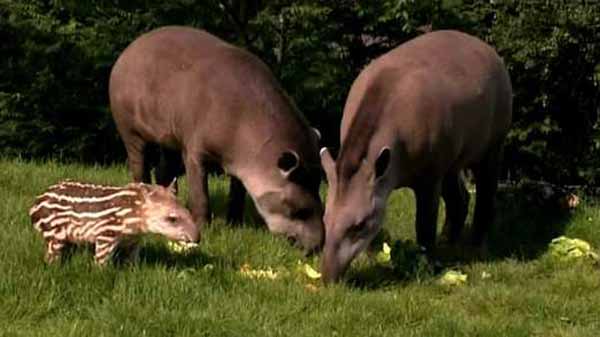Creatures of the Amazon Rainforest
Table of Contents
There’s nothing more endearing than some good old animal stories. But it’s not common household animals I’m talking about here, but some great ones that live in the tropical forests. This ecosystem supports a greater number and variety of animals than any other biome. One of the reasons for this great variety of animals is the constant warmth. Tropical rainforests also provide a nearly constant supply of water and a wide variety of food for the animals. So here are 10 amazing tropical rainforest animals and a list containing a few facts and pieces of information regarding their life.
https://www.youtube.com/watch?v=nFJ_0JrKAWs
1. Toucans
Toucans are found in South and Central America in the canopy layer of the rainforest. When they sleep, they turn their heads around and tuck their bills under their wings and tail. The toucan is very important to the rainforest because they help to disperse seeds from the fruits and berries they eat. There are about 40 different types of toucans, but unfortunately some species are threatened. Loss of habitat, and capture for the commercial pet market are two major threats.
They vary in size from about 7 inches to a little over two feet. Large, colorful, yet lightweight bills distinguish toucans. They can be noisy birds with their calls sounding harsh and raspy.
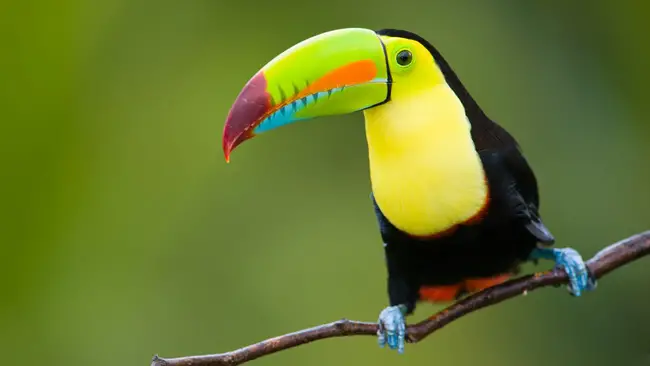
2. Flying Dragons
An arboreal lizard, the so-called flying dragon actually glides from tree to tree on skin flaps that look like wings. At each side of its body, between front and hind limbs, there is a large flap of skin, supported by extended movable ribs. Usually these flaps are held folded at the sides of the body, but they can be extended to carry the lizard in an almost horizontal glide for many meters. The flying dragon feeds on insects, particularly ants. To breed, the flying dragon descends to the ground and buries its 1 to 4 eggs in the soil.
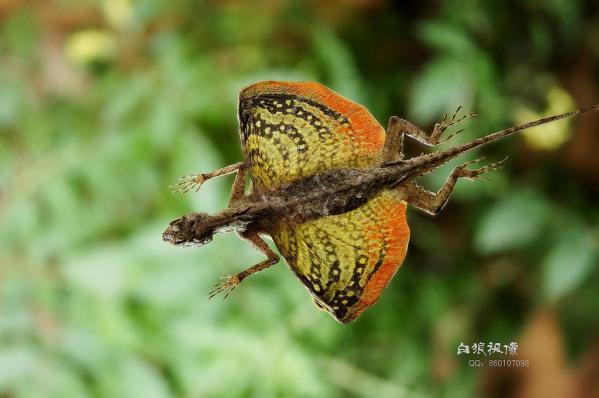
3. Bengal Tigers
The Bengal Tiger lives in the Sundarban regions of India, Bangladesh, China, Siberia and Indonesia, and is extremely endangered. Today, only about 4,000 are left in the wild whereas at the turn of the century in 1900 there were over 50,000. Poaching and loss of habitat are the two major reasons for the decline in numbers. They haven’t been able to adapt to harsh conditions, despite their being such dominant specie. Also known as the Royal Bengal tiger, which is a subspecies of tiger, it is found across the Indian subcontinent. The Bengal tiger is the national animal of Bangladesh and is considered to be the second largest tiger in the world.
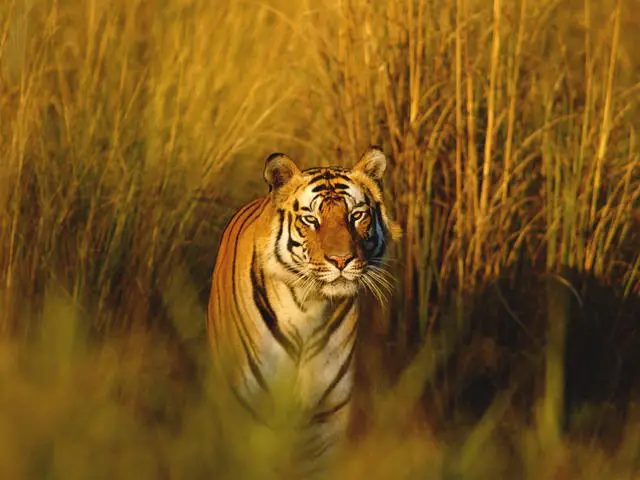
4. Harpy Eagles
One of the largest and most powerful of the fifty species of eagles in the world, the Harpy Eagle lives in the tropical lowland rainforests of Central and South America, from southern Mexico southward to eastern Bolivia, southern Brazil and the northernmost parts of Argentina. Endangered, the major threat to Harpy Eagles is loss of habitat from clear cutting, destruction of nesting sites and hunting.

5. Poison-Arrow Frogs
These are social frogs found in Central and South America. They are known by their bright colors, which warn other animals that they are poisonous. Its poison is one of the most powerful known and can cause paralysis or death. It is so potent that one millionth of an ounce can kill a dog and an amount smaller than a grain of salt can kill a human. One frog carries enough poison to kill about 100 people. Native hunters use it on the tips of their arrows, which is how the frog got its name.
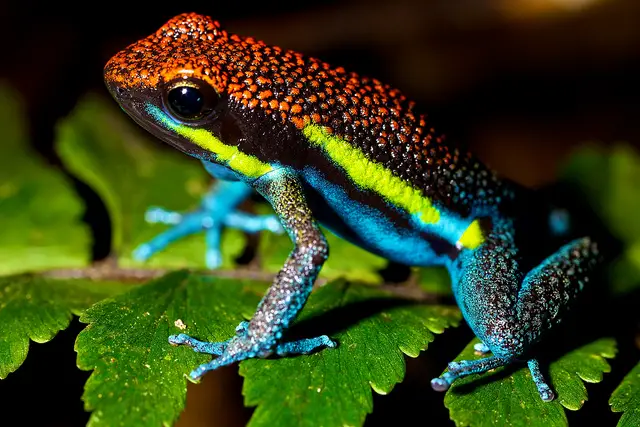
6. Sloths
Sloths are extremely slow-moving mammals found in the rainforest canopies of Central and South America. There are two species of sloths: two-toed and three-toed. Most sloths are about the size of a small dog and they have short, flat flat heads. Their hair is grayish brown but at times they look grey-green in color because they move so slowly that tiny camouflaging algae grow all over their coats. Sloths are nocturnal and sleep curled up with their head placed between the arms and the feet drawn close together.
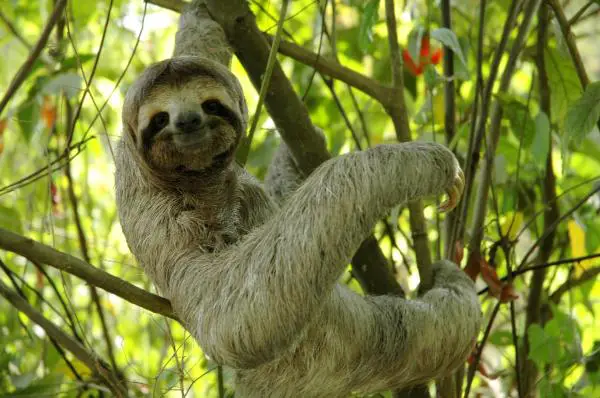
7. Spider Monkeys
Spider monkeys are large in size. Adult monkeys grow to be almost two feet tall excluding the tail. They have a powerful tail that they use as an extra limb. Spider monkeys like to hang upside-down with all four limbs and the tail holding on to branches, which makes them look like a spider, and thus their name. They also have the ability to swing from branch to branch at a high speed. Their fur color can be black, brown, golden, red, or tan. Spider monkeys are heavily hunted and are in danger of becoming extinct. So this picture is probably your only chance of your ever seeing one. Not to mention our kinds…
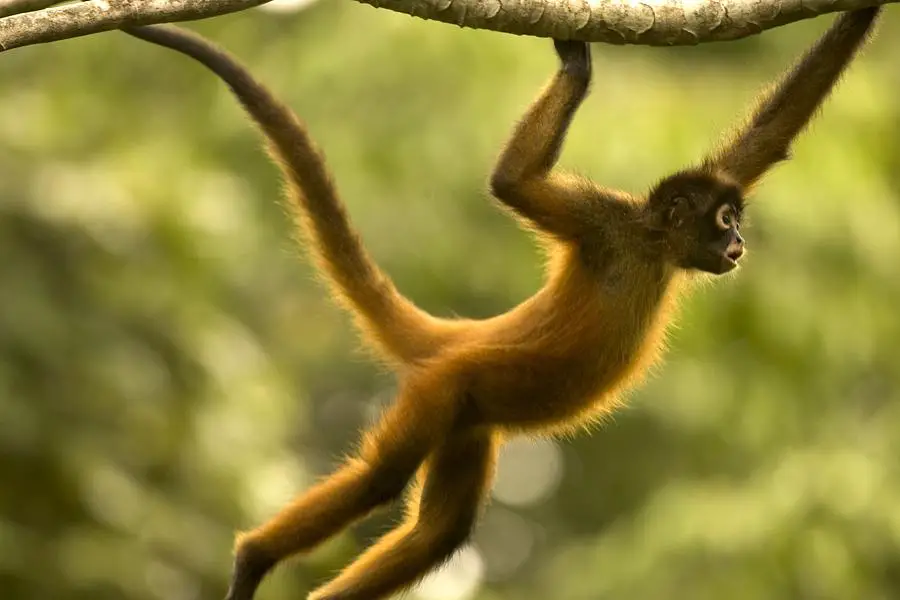
8. Vine Snakes
About 1/2 in in diameter at the most, the vine snake is a remarkably slender, elongated species. As it lies amid the branches of forest trees, its proportions and green-brown coloration make it almost indistinguishable from the abundant creepers and vines. Its head, too, is thin and elongated and equipped with rear fangs and mild venom. A slow-moving predator, active in the daytime and at night, the vine snake feeds mainly on young birds, which it steals from nests, and on lizards. If threatened, it puffs up the front of its body, revealing vivid coloration usually hidden under scales, and opens its long mouth wide.
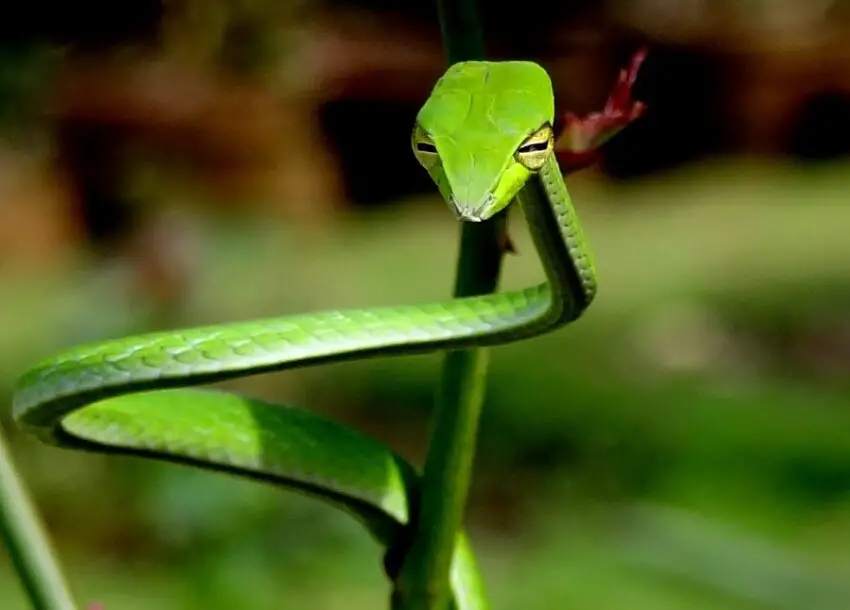
9. Capybaras
The capybara spends much time in water and is an excellent swimmer and diver; it has partial webs between the digits of both its hind feet and forefeet. When swimming, only its eyes, ears, and nostrils show above the water. Capybaras feed on plant material, including aquatic plants, and their cheek teeth grow throughout life to counteract the wear and tear of chewing. They live in family groups and are active at dawn and dusk. In areas where they are frequently disturbed, capybaras may be nocturnal. Males and females look alike, but there is a scent gland on the nose that is larger in the male. They mate in spring, and a litter of 2 young is born after a gestation of 15 to 18 weeks. The young are well developed at birth.
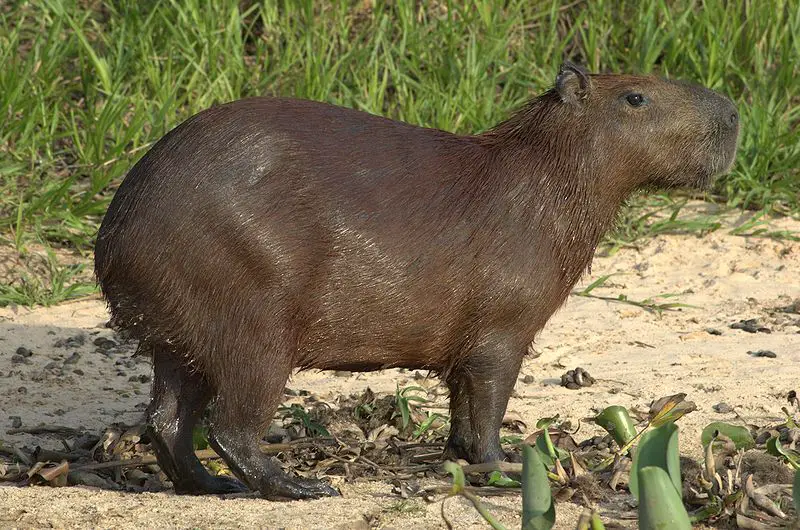
10. Brazilian Tapirs
Nearly always found near water, the Brazilian tapir is a good swimmer and diver but also moves fast on land, even over rugged, mountainous country. It is dark brown in color and has a low, erect mane running from the crown down the back of the neck. Using its mobile snout, this tapir feeds on leaves, buds, shoots, and small branches that it tears from trees, fruit, grasses and aquatic plants. The female gives birth to a single spotted and striped young after a gestation of 390 to 400 days.
